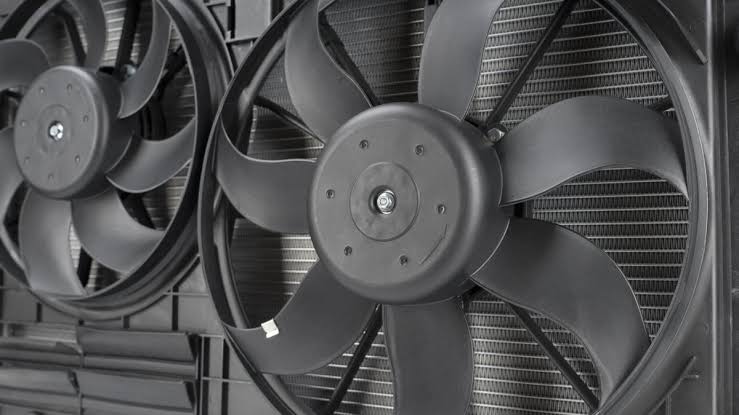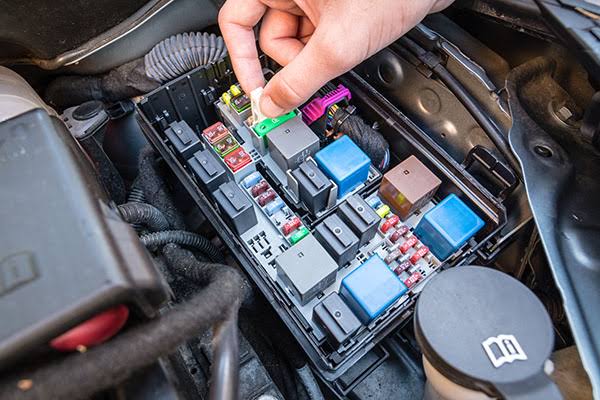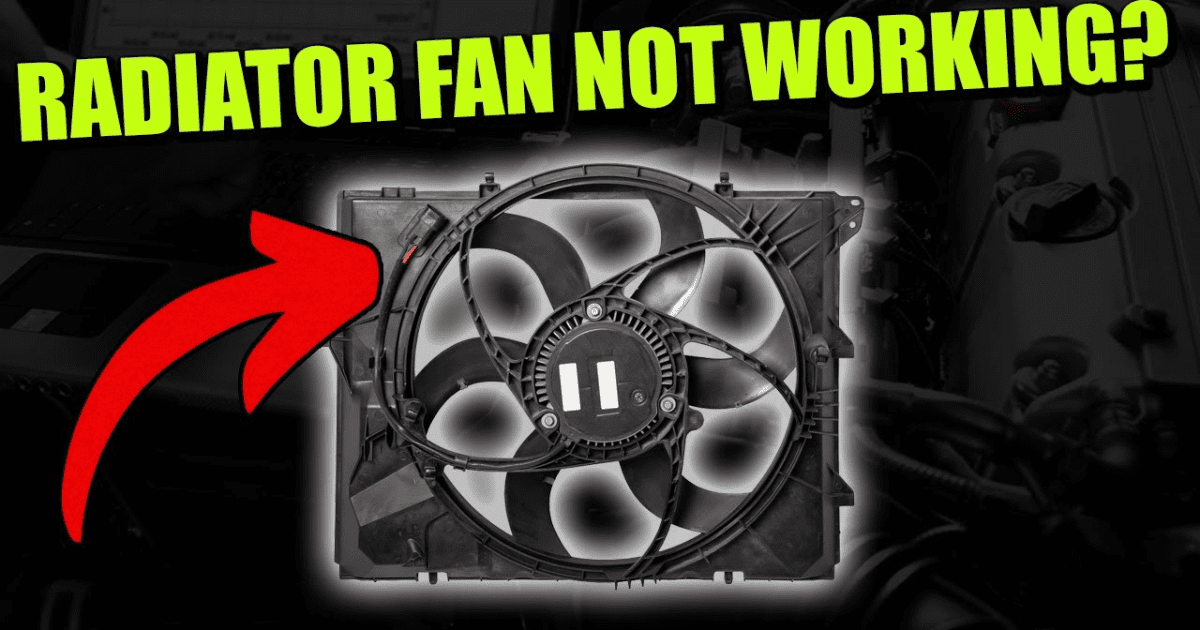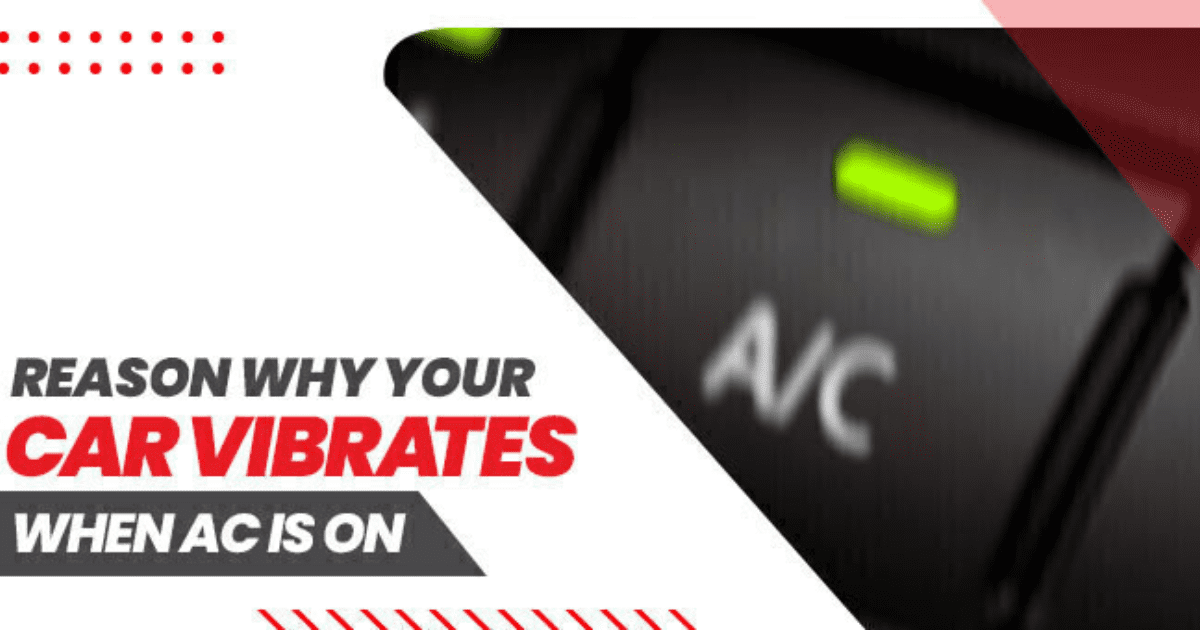What is a radiator fan? What does it do? A radiator fan is something that helps keep the engine of your car cool. The radiator is a metal part that holds coolant, a liquid that pulls heat from the engine. It is usually found behind the radiator. The fan inside the radiator moves air through it. This helps the coolant get rid of heat and keeps the engine at a safe temperature.
How can you tell if your radiator fan is not working? Some of the common symptoms are:
- The temperature gauge in your car tells you that the engine is getting too hot.
- The check engine light on your car comes on.
- The air conditioning in your car doesn’t work right or at all.
- You hear a loud noise or smell fire coming from your engine.
- You can see smoke or steam coming from your hood.

You shouldn’t ignore any of these signs if you see them. There is a problem with your radiator fan. You should try to figure it out and fix it right away. There are 10 reasons a radiator fan might not be working. This guide will show you how to find them and fix them.
10 Possible Causes of a Radiator Fan Not Working
If a radiator fan doesn’t work, it could be due to a number of things. Here are some of them:

- There is a small device called a fuse in your car that keeps the electrical lines from being damaged by too much current. If your car has a short circuit or a power surge, a fuse can blow or burn out. If you blow a switch, the electricity to your radiator fan might not get to it, so it won’t turn on.
- Solution: Change the switch that blew: To change the blown fuse, open the fuse box under the hood or in the dashboard and find the fuse that powers the radiator fan. You should look at the metal strip inside the fuse to see if it’s blown. The flame has been blown if the metal strip is broken or burned. You need to take out the old fuse and put in a new one that has the same amperage value. Start your car, turn on the air conditioning, and make sure the cooling fan works.
- If your relay is broken, the power that goes to your radiator fan will not work. It’s most likely in a switch box under the hood or in the dashboard. If a switch is worn out, corroded, or broken by heat or water, it may not work right. If your switch is broken, the power to your radiator fan might not get to it, so it won’t turn on.
- What to do: Getting rid of the broken relay: To change the bad relay, open the fuse box under the hood or on the dashboard and find the relay that handles the radiator fan. One way to tell if the switch is broken is to hear a clicking sound when you turn on the AC. You should hear a clicking sound if you don’t hear one. You need to take out the old relay and put in a new one that is the same in every way. Start your car, turn on the air conditioning, and make sure the cooling fan works.
- Radiator fan motor that doesn’t work right: The motor is what turns the fan blades. Most of the time, it’s behind the heater fan. If the motor for the radiator fan is burned out, shorted out, or clogged with dirt or dust, it may not work right. If the motor for the radiator fan is broken, it won’t be able to turn the fan blades, so it won’t work.
- Replacement of the broken radiator fan motor is the solution. To change the broken radiator fan motor, you need to use jack stands to raise and support your car. Then, you need to take the radiator fan assembly’s electrical connector and wires off of it. You need to take the radiator fan unit off of your car by unscrewing the bolts that hold it to the radiator. First, take off the bolts that connect the radiator fan motor to the radiator fan assembly. Then, take the assembly off of your car. After that, you need to put in your new radiator fan motor and connect it to your radiator fan system again. You need to put the radiator fan unit back on the radiator and connect the electrical connector and hoses to it again. Bring your car down, start it, turn on the AC, and see if the cooling fan works.
- Problems with the lines that connect your car’s battery, relay, fuse, or switch to your radiator fan are called wiring problems. Damage to the wiring can include lines that are broken, loose, corroded, or shorted. If there are problems with the wiring, the electricity might not get to your radiator fan and it will not work.
- What to do: To fix problems with the wiring: Check the wires that connect your car’s battery, circuit, fuse, or switch to the wires that connect your radiator fan. You should check the lines for any signs of damage or rust. You need to use a multimeter to check the lines for continuity and voltage. There are some wires that are broken or loose. You need to join them together or solder new wires to them. Any wires that are rusted need to be cleaned with a wire brush or swapped out for new ones. Start your car, turn on the air conditioning, and make sure the cooling fan works.
- Having trouble with the coolant temperature sensor? The coolant temperature sensor checks how hot the water in your engine is. It is usually on the cylinder head or close to the thermostat box. Based on how hot or cold your engine is, the coolant temperature monitor tells your car’s computer (ECU) when to turn on and off the radiator fan. If the coolant temperature monitor is broken, it might send the wrong information to your ECU. This could stop your radiator fan from turning on when your engine is too hot.
- Replacement of the broken coolant temperature sensor is the solution. The broken coolant temperature sensor should be found on or near the thermostat box so that it can be replaced. You will need to use a wrench or a socket wrench to remove the electrical connection and unscrew it from its socket. You need to put in your new coolant temperature sensor and make sure it is tight. Connect the wires back to the unit, start the car, turn on the air conditioning, and see if the radiator fan works.
- Trouble with the thermostat: The thermostat controls how much water flows through your engine. It’s generally on the cylinder head or close to the water pump. The thermostat changes what it does based on the temperature of your engine. The thermostat stops when your engine is cold, stopping coolant from moving through the radiator. This helps your engine warm up faster. The thermostat opens when your engine is hot, letting water flow through the radiator. This helps your engine cool down faster. If the thermostat is broken, it might not open or close at all, which could stop the radiator fan from turning on when the engine is too hot.
- Solution: Get a new thermostat to replace the broken one: To change the broken thermostat, you need to use a drain plug or a hose clamp to drain some water from the engine. Following that, you need to find the temperature on or near the water pump. You need to take the thermostat case off of your car by unscrewing the bolts that hold it in place. You need to clean the areas that touch the old thermostat and gasket before taking them out of the housing. You need to put in the new thermostat and gasket, then put the case back in place and tighten the bolts. Adding more water is important. Next, start the car, turn on the AC, and see if the radiator fan works.
- Problems with the water pump: The water pump moves coolant around your engine’s cooling system. Most of the time, a belt links it to the crankshaft pulley and turns it. The coolant moves through the thermostat, heater core, hoses, lines, and radiator with the help of the water pump. The water pump might leak coolant, make noise, or stop working all together if it’s broken. If your water pump is broken, your radiator fan might not be able to cool your engine properly.
- Solution: Get a new water pump to replace the broken one: To change the broken water pump, you need to use a drain plug or a hose clamp to drain some coolant from the engine. You will then need to use a wrench or ratchet to take the serpentine belt off of the water pump pulley. To take the water pump out of your car, you need to loosen the bolts that hold it to the engine block. The old gasket needs to be taken off the water pump and the parts that fit together need to be cleaned. You need to put the new water pump and seal in place, then put the engine block back together and tighten the bolts. The serpentine belt needs to be put back in place and its tightness needs to be changed. Adding more water is important. Next, start the car, turn on the AC, and see if the radiator fan works.
- Clogged radiator: A clogged radiator is one that is obstructed by material, rust, scale, or dirt. If the radiator is clogged, the coolant may not be able to run through it properly, which makes it less effective at cooling. If your radiator gets jammed, the fan that cools the engine may not work as well.
- Cleaning the clogged radiator: To clean the clogged radiator, you need to flush it with water or a radiator flush solution. You can spray water through the radiator fins from both sides with a yard hose or a pressure washer. You can also buy a radiator flush solution online or at an auto parts shop. Fill the bottle up the way it says to and pour the solution into your radiator. After letting the engine run for a few minutes, you need to drain the solution from the radiator. This process needs to be done again and again until the oil or water is clean. Adding more water is important. Next, start the car, turn on the AC, and see if the radiator fan works.
- Coolant level too low: Your radiator fan won’t be able to cool your engine well if the coolant level is too low. Leaks, evaporation, or bad filling can all lead to a low amount of coolant. If you don’t have enough water in your system, air bubbles can form, which can make it work less well. Check the amount of your coolant often and add more if needed.
- What to do: Top-off of the low amount of coolant: When your engine is cold, open the radiator cap and check the coolant amount in your radiator. If it’s low, add more coolant. So that the radiator is full, you need to use a tube to pour coolant into it. If your overflow tank needs more water, you should check it and add it. Turn on your AC, start your car, and close the radiator cap. Then, check to see if the radiator fan works.
- Air bubbles in the cooling system: Air bubbles are air pockets that get stuck in the radiator, hoses, or lines. Because they take up space and stop the coolant from moving properly, air bubbles can make your cooling system work less well. Your coolant can also boil and make steam if you have air bubbles in it. This can damage your engine. Lack of cooling, leaks, or bad filling can all lead to air bubbles. Before adding the right amount and type of coolant, you should bleed the system to get rid of any air bubbles.
- What to do: Letting air bubbles escape from the cooling system: When your engine is cold, open the radiator cap and turn it on. This will get rid of any air bubbles in the cooling system. It’s time to let the engine run for a while and turn on the heater to full blast. Keep an eye out for bubbles coming out of your coolant or overflow tank. You should lightly squeeze the upper and lower radiator hoses to help get rid of any air that is stuck inside. If it needs it, you should add more coolant until there are no more bubbles. Turn on your AC, start your car, and close the radiator cap. Then, check to see if the radiator fan works.
- It’s possible for the serpentine belt to slip. The serpentine belt is a long rubber belt that slides along different pulleys and powers engine parts like the generator, power steering pump, water pump, and radiator fan. Worn-out or loose pulleys can cause the serpentine belt to slip off of them. If your serpentine belt slips, your radiator fan might not be able to turn on.
- Solution: Put the slipped serpentine belt back in place: To put the slipped serpentine belt back on, you need to open the hood and find the pulley for the serpentine belt. The pulley that keeps the force on your serpentine belt is usually one that is loaded with springs. To release the stress in your serpentine belt, you need to turn your tensioner either clockwise or anticlockwise (depending on how it’s made). After that, you need to put the serpentine belt back on its pulleys by following the picture that is usually on a sticker under the hood. You need to turn your tensioner around and pull on your serpentine belt. Start your car, turn on the air conditioning, and make sure the cooling fan works.

Conclusion
A common problem that many car owners have is that their radiator fan doesn’t work. It could be because of a blown fuse, a bad relay, a bad radiator fan motor, bad wiring, a coolant temperature monitor that doesn’t work, a bad thermostat, a bad water pump, a clogged radiator, low coolant, air bubbles in the cooling system, or a serpentine belt that has slipped. You need to look at different parts of your car for signs of damage or failure in order to figure out what’s wrong and fix it. This could mean that you need to fix or replace some of these things.




